How to assign products to families and family models when importing a CSV file
If you're using Product Families Iteration 2 in your account, you will notice that some things are different than before when importing a CSV file. This article will outline the steps to assign products to a Family and a Family Model in two cases: when you have a Family column in your CSV file and when you don’t.
⚠️ Disclaimer: This feature is not available for use in all accounts yet.
Choosing import options for a family column
Choosing import options without a family column
*Skip to any section in this article by clicking on the links above
Importing your CSV file
- Navigate to the importer by clicking on 'Products,' then 'Import.' Under the “Upload” tab, upload your CSV file for import.

- Drag and drop a file or click to select a file from your computer. Select the correct file settings to ensure the preview of your file looks the same as your CSV. Click 'Next.'
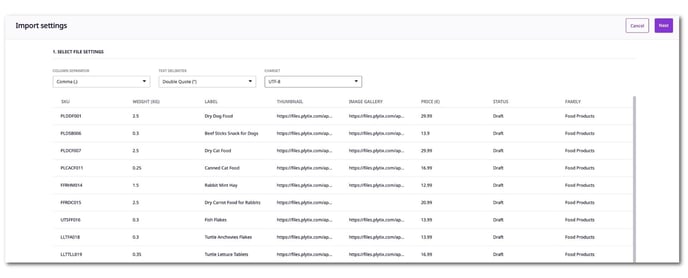
- Select import options according to your needs. Click 'Next.'
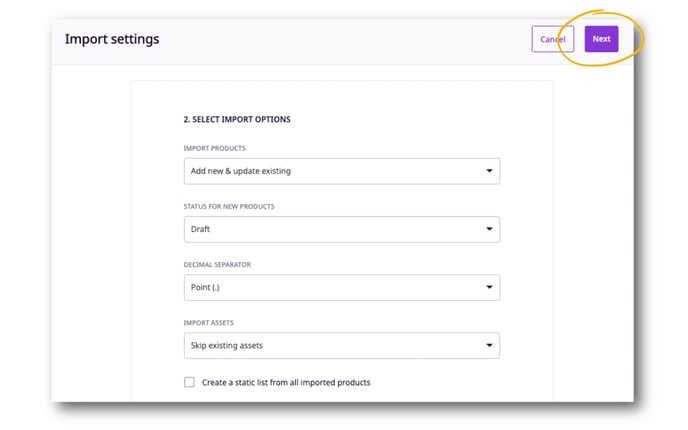
4. Now you'll select Product Family options. There are three sections to determine what happens when your product information is imported.
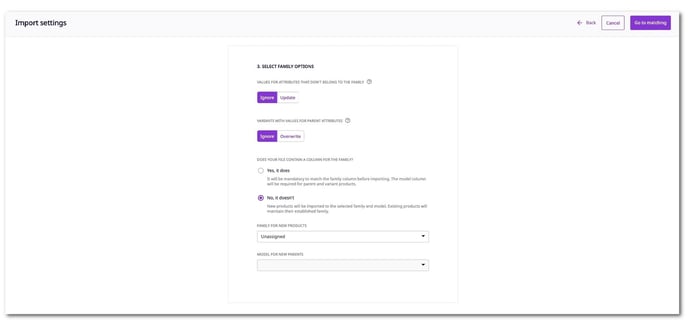
5. The first two sections are related to attribute values.
If you are importing attribute values for attributes that do not belong to a product’s family, you can choose whether you want to ignore or update those changes under “Values for attributes that don’t belong to the family.” If you choose ‘Update,’ the attributes that aren’t part of a product’s family will still be linked to the product.
Parent attributes can be passed on to variants with the exact same values, or you can choose to edit parent attributes at a variant level. If you are importing changes for parent attributes but at a variant-level, you can choose whether you want to ignore those changes or overwrite the already existing value of the parent attribute for the variants you are editing. These options can be found under “Variants with values for parent attributes.”
💡 If you are only importing single products, this will not affect your values for these products; keep the default ‘Ignore’ option selected in this case.

The final two sections are about family columns. You can choose your import options based on two different cases:
When your file contains a column for the family
When your file does not contain a column for the family
When your file contains a column for the family
- If your file contains a column for the family, select ‘Yes, it does.’ If this option is selected, you will be required to match the column with the “Family” attribute in your PIM in the next step. Click ‘Go to matching’ to be redirected to the matching section.
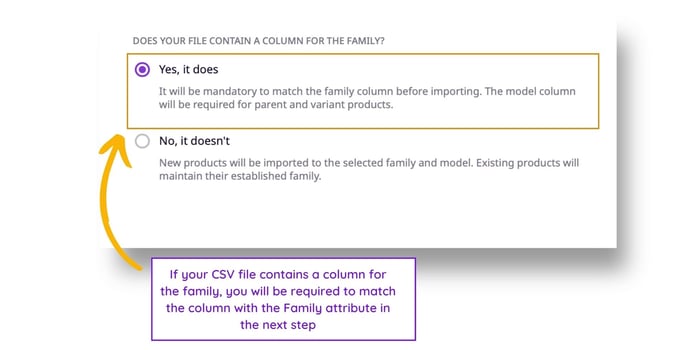
⚠️ You will need to create families in Plytix prior to importing and matching a family column. If you are importing a family column for a family that does not exist in the PIM, you will get an error upon import.
2. In the matching page, you will be required to match both the SKU and Family columns; the ‘Start Import’ option will stay disabled until these columns are matched.
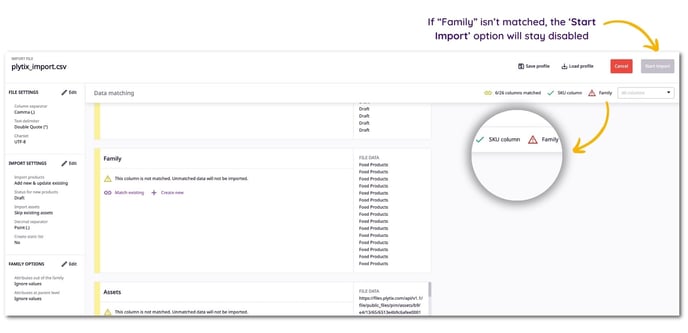
3. To match a column with the “Family” attribute, select ‘Match existing.’ A window with the matching options will pop up. To match with a family, scroll down to “System attributes” and select ‘Family’
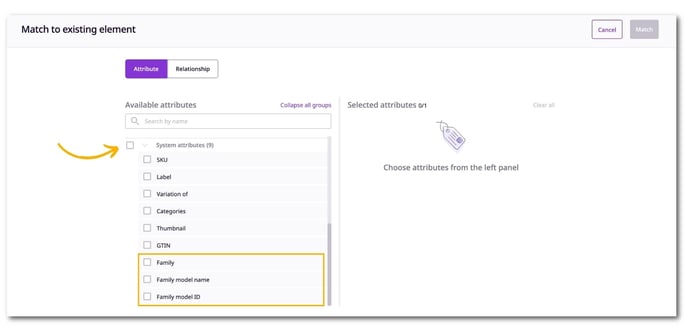
While the required field to match is “Family,” you also have the option of matching a different column to “Family model name” or “Family model ID”
ℹ️ When matching a column to a family model, you can only choose to match it with a model name or model ID. If you choose to match a column with one option for a column, the other option will not show up under System Attributes for other columns in matching
4. In the matching section, you may also review your file settings, import settings, and Family options settings, which you can change by clicking on the 'Edit' icon on the left-hand side of the page.
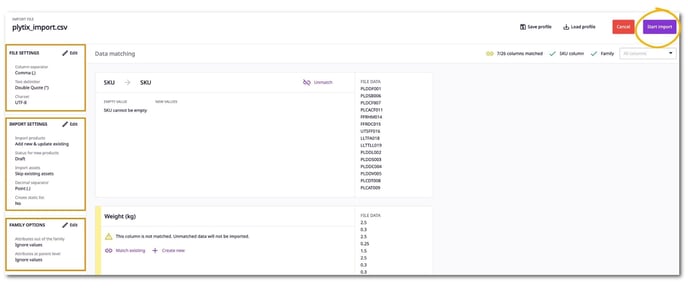
5. Lastly, click 'Start import.'
When your file does not contain a column for the family
1. If your file does not contain a column for the family, select ‘No, it doesn’t.’ If this option is selected, there will be no option to match a column to the Family attribute in the next step. In addition, all of your new products will be assigned to the same family. You can choose which family your products should be assigned to by selecting it in the dropdown options.
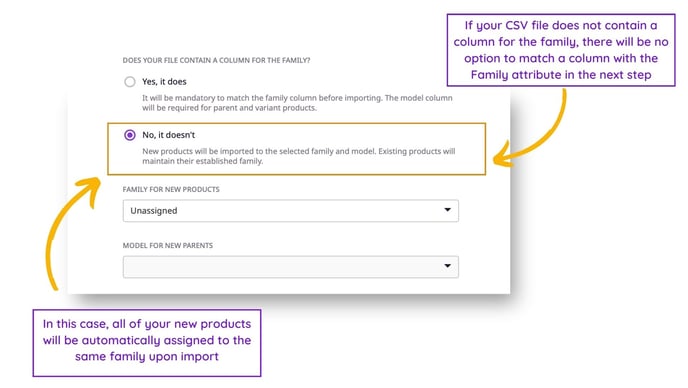
2. In the matching section, match your columns to existing attributes in Plytix or create new ones. The only column that needs to be matched before you have the option to start your import is the SKU column. You can also edit your file settings on the left-hand side options of the page.
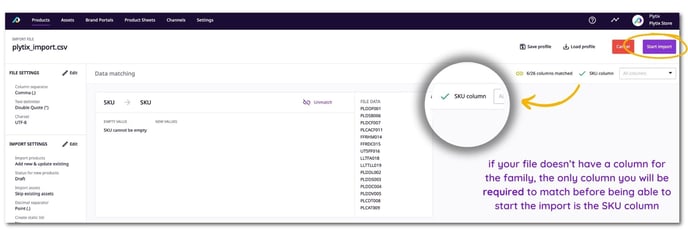
3. When you have completed your data matching, click ‘Start import’
What's next?
- Learn how to assign products to your product families
- Learn how to work with table views
- Learn about creating and managing Product Families 2
If you have any questions just click on the chat box in the bottom-right corner and we'll be happy to answer them...
and please let us know 👇